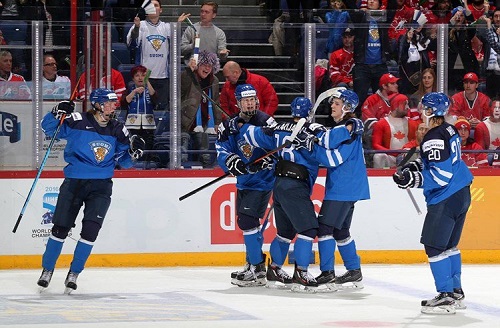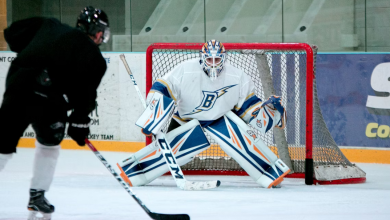Finland Topples Defending Champ Canada at the 2016 World Junior Championships

In yet another dazzling display of puck prowess, the hosting team of the 2016 IIHF World Junior Championship managed to take down Team Canada in the quarterfinal round, thus eliminating them from going further in the tournament.
“This was the most amazing game of my life so far,” said Finland’s Patrik Laine, who scored the game-winning goal. “I hope that we will keep going and hope that we can win more.”
The game came as a huge disappointment to Team Canada and its fans, coming off of a gold medal in last year’s competition to being eliminated in the quarterfinal round by the 2014 gold medalist team. It was Canada who struck first, taking a 2-0 lead early in the game, beating Veini Vehvilainen without much of a problem. Just as it seemed the Canadians would end the first period without being scored on, Finland’s Patrik Laine snuck a goal past Mackenzie Blackwood off of a one-timer in the last 11 seconds, ending the first stanza with a score of 2-1.
Looking to even up the score before Canada widened the deficit, Team Finland came out of the gate into the second period strong, finally scoring 6 minutes in after Canada’s defense had a minor slip-up, allowing Antti Kalapudas to break through and score, bringing the score to 2-2. Unfortunately, the Finns’ lead was short lived, as the Canadians attacked hard and beat Vehvilainen on his glove-side, once again taking lead of the game. It was at this point that Finland’s head coach Jukka Jalonen decided to replace Vehvilainen with 19 year-old Kaapo Kahkonen of the Espoo Blues, whose only appearance at this year’s WJC was in Finland’s 8-3 victory over Slovakia.
“Actually, I didn’t expect that,” Finnish defender Olli Juolevi said of the switch. “But I kind of understand that they want to wake our team up. I think it was pretty smart. Kaapo made some good saves in the second period and also the third period.”
Kahkonen immediately began stopping huge shots and robbed the Canadians of what seemed to be a couple surefire goals. In the closing minutes of the period, Finland went on the powerplay, a deadly situation for anyone that has faced the Finns this year, capitalizing on the opportunity and tying the game, before scoring another goal just minutes later, bringing the final score for the second period to 4-3.
Canada came into the third fighting hard to even up the score, which they achieved just 3 minutes into the third stanza when Mitch Marner beat Kahkonen for the game-tying goal. It only took Finland a minute of play to respond to the goal, as Sebastian Aho notched the puck past Blackwood, with Puljujarvi getting the assist on the 5-4 goal. In what seemed like a game of goal tag, Canada once again tied the score just a minute later with another goal from Marner, but Finland once again fired back with another goal, bringing the score to 6-5. The buzzer rang out through Hartwall Arena, signifying Finland’s win and Canada’s third medal-less WJC in the past four years.
“Finland scores a lot of goals, and you wish them all the best because they’re the team that beat you out,” said Canada’s Joe Hicketts. “That being said, there are so many great nations, and that just proves it in the quarter-finals. You look at what Denmark did to Russia, forcing them to overtime. You’ve got six, seven powerhouse hockey nations now, and anyone can win on any given night.”
This win sends Finland to the semifinal round, where they will face their rivals, Team Sweden, to determine which team will head to the finals for a shot at the coveted gold medal.

